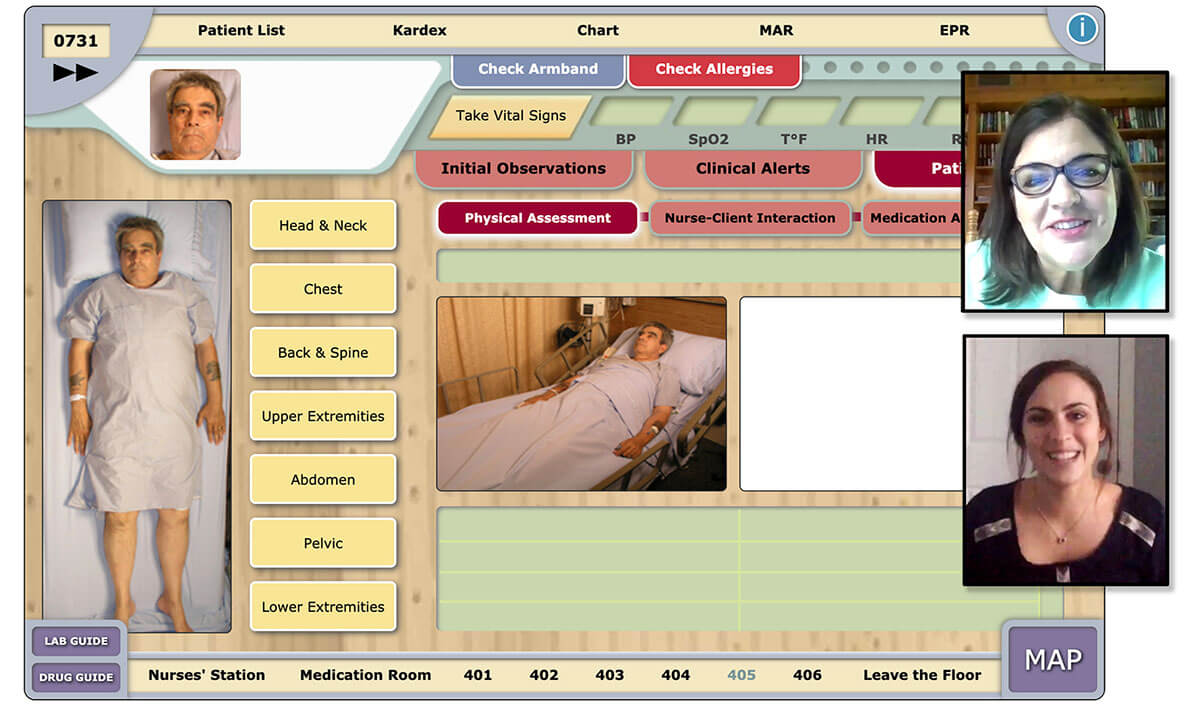April 24, 2020
As the coronavirus crisis unfolded across Ohio in early March, Shawnee State University students faced a new world of challenges.
Following state guidelines to minimize the virus spreading, faculty switched from in-person classroom meetings to other teaching methods. Following a hiatus March 16-20 for instructors to move course materials to a 100 percent online format, classes resumed.
“I have had to be adaptable,” Savannah Leeth, a senior pursuing her Bachelor of Nursing, explained. Faculty switched in a few days to virtual presentations in video conferences and chat rooms, internet-based classes and the use of other online tools.
Instead of gathering in a room or lab, the students assemble through their home computer or laptop using a camera and microphone, appearing in a virtual group. The instructor may present a lecture with slides, take questions and even administer testing.
One big change Leeth encountered in her nursing instruction was similar to how a number of medical professionals are currently seeing patients online.
“I have been learning how to assess a patient through online simulation in addition to the in-person hospital experience,” she said.

Nursing student Rowan Rine (inset, lower right) talks with Shawnee State University Nursing Professor Adair Carroll (above) during an online video call in front of a screen shot of virtual clinical software courtesy of Elsevier, a national medical education software provider.
Virtual instruction won’t replace hands-on learning for the students. SSU Nursing Department Chair Leeann Denning explained how the nursing students are still meeting state requirements.
“These seniors already have had seven weeks with their instructor in the first part of this semester, learning face-to-face in the nursing environment,” Denning said.
“We have end-of-program learning outcomes that must be met and The Ohio Board of Nursing has directed programs to be creative and get students graduated. The faculty took off with that direction.”
Instructors and technical experts built a virtual clinical environment. “A key part of training is learning how to think like a nurse. That’s where our faculty worked with vendors to build out new ways for our students to get this experience.”
While the changes in classes were under way, hundreds of students faced the stress of packing up and moving back to their permanent homes. University housing accommodated students unable for leave campus for various reasons, and essential student services are open, but in one way or another everyone was affected.
To better understand how students are handling the changes, Marc Scott, SSU’s director of Assessment and Accreditation, conducted a detailed survey. More than 300 responses later, the results confirmed his suspicion about a surprising issue: many students lack the technology they need to succeed in online instruction.
“Student access to technology can be taken for granted, and I think these survey results support the idea that access is still an issue,” Scott said. “It’s very much patchwork. In their homes, some students are borrowing or sharing a laptop from among a family of three or four people, with one or two others also needing to telecommute to do work.”
Scott shared the results with all faculty and held a virtual discussion with instructors and leaders to consider these facts and try to minimize the complexity of online instruction.
“Simplify the classes,” he said. “The bells and whistles we want to integrate have to wait. We have to make access as simple as possible.”
In Spring Semester 2020, more than 95% of students were in at least one or more in-person course when university officials followed state guidelines on physical distancing to reduce community spread of COVID-19.
“We have 3,445 students currently enrolled for spring semester,” SSU Registrar Tami Sheets said. “We have more than 3,300 students who were attending main campus classes, not enrolled in an online program.”
With more than 3,300 student switching to online in order to complete courses, one of the biggest lessons for both students and faculty Shawnee State became successful flexibility.
“Our professors have done an amazing job by allowing us the opportunity to do online lectures and clinicals so that we will be able to graduate on time,” Leeth said. “Also, the campus staff has done a great job to keep us informed and up to date about current situations and about what is offered at campus.”
